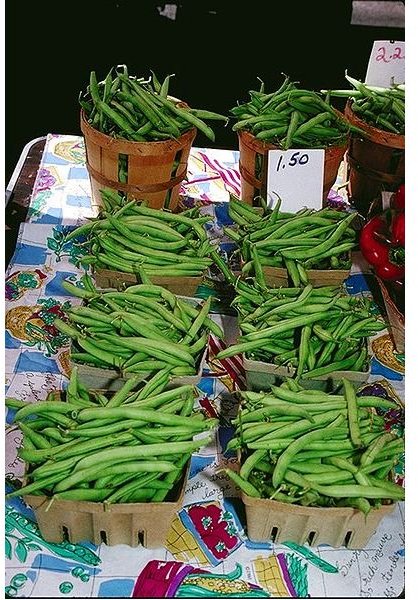Learn How to Cook Fresh Green Beans: One Part of Quick, Easy and Healthy Meal Planning
Why Eat Fresh Green Beans?
One cup of raw snap green beans contains 34 calories, with zero grams of fat and cholesterol. There are seven mg of sodium and two grams of protein in that cup of green beans, with four of the eight grams of carbohydrates coming from dietary fiber. Green beans are rich in vitamins A and C, containing 15% and 30% of the recommended daily allowance (RDA) for each, respectively.
Those interested in learning how to cook fresh green beans should know that although one recently popular way to cook green beans is to bread and deep fry them, it certainly is not the most healthy way to eat this great source of vitamins C and A.
Cooking fresh green beans takes approximately the same amount of time as cooking canned or frozen green beans. This makes it a quick and easy way to add more health to anyone’s dietary meal planning and routine.
How to Prepare Fresh Green Beans for Cooking
Fresh green beans require a small amount of preparation before being cooked. The first step is to sort them; good from bad. The bad green beans may be tossed into a compost pile. Working with the ‘good’ green beans, the ends can be ‘snapped’ off or cut. Be sure to pull off all string with the ends. The good green beans should then be thoroughly washed, drained and patted dry. The beans may also be cut to shorter lengths, if desired.
Steaming Green Beans
Green beans may be steamed using a rice or vegetable steamer, on a stovetop or in a microwave. To steam in a rice or vegetable steamer, carefully follow steamer instructions for settings and time.
To steam green beans on a stovetop, place about an inch of water and then a steamer basket into a pot. Put green beans into the steamer basket and close it. Bring the water to a boil and cover. Let boil, covered, for about four minutes. Remove from heat, remove lid and carefully remove steamer basket. Use care when opening steamer basket to avoid steam burns.
Green beans may also be steamed in a microwave, using any number of products specially designed for microwave steaming. Follow product directions carefully and use caution when opening in order to avoid steam burns.
Boiling Green Beans
Boiling green beans does not retain all of the nutritional value that steaming them does, but it is a better option than breading and frying them. Green beans may be boiled in water or in vegetable broth.
Bring a pot of water to boil and drop cleaned, snapped green beans into water. Boil for approximately four minutes for crunchy results or longer for a softer cooked green bean. When done, drain and dunk in cold water to stop the cooking process. Drain, pat dry, season as desired and serve.
Oil-less Frying
Certain pans can be used to fry foods without the use of oil or butter. This method thoroughly heats the food through while browning the outside of it. Green beans can be fried in this method, alone or with the addition of seasonings or other foods (such as in a stir fry dish).
Seasoning Green Beans
Though some people will want to add some type of butter, margarine or equivalent substitute, green beans can be seasoned without them. Lemon pepper, Italian seasoning, and minced garlic are just a few options. Learning how to cook fresh green beans with a variety of seasonings can help make them a regular part of a well-balanced diet.
References
Beans, snap, green, raw. Nutrition data. https://nutritiondata.self.com/facts/vegetables-and-vegetable-products/2341/2
Cooking Green Beans. Health Recipes for Kids. https://www.healthy-recipes-for-kids.com/cooking-green-beans.html
Image Credit
Green beans – Phaseolus vulgaris. United States Department of Agriculture. Public Domain. Wikimedia Commons. https://commons.wikimedia.org/wiki/File:Green-beans.jpg
